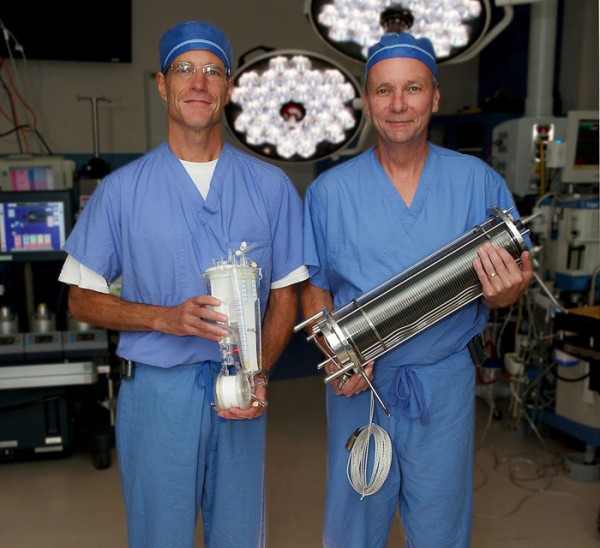
(L-R) Tom Murray holds the equipment that’s currently used when patients are on the heart-lung bypass machine, while Mike Corrigan holds the equipment that was used in the 1970s.
Tom Murray and Mike Corrigan like to compare themselves to airline pilots. That’s because their jobs as perfusionists at Akron Children’s Heart Center call for them to work in tandem with each other almost daily.
“When one of us is captain, the other acts as copilot and vice versa,” said Murray.
Today it’s Murray’s turn to be the primary perfusionist on a Norwood procedure being performed on a 5-day-old baby who was born with hypoplastic left heart syndrome (half a heart).
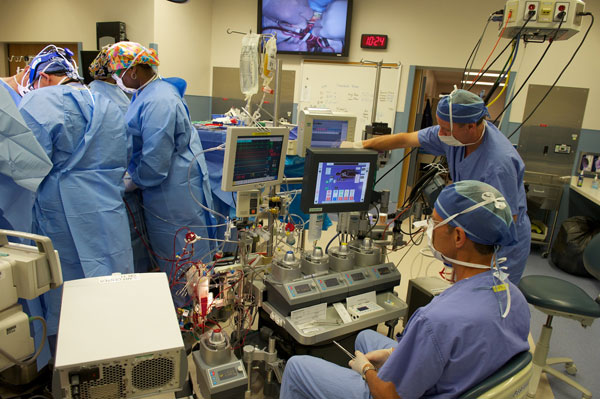 “My job is to operate the heart lung machine that will take over the function of the baby’s heart and lungs during surgery,” said Murray. “The heart side of the machine pumps the patient’s blood back up to the body and the oxygenator takes over the lung function and provides gas exchange into the bloodstream. The purpose is to allow the heart to be still so the surgeon can operate on it.”
“My job is to operate the heart lung machine that will take over the function of the baby’s heart and lungs during surgery,” said Murray. “The heart side of the machine pumps the patient’s blood back up to the body and the oxygenator takes over the lung function and provides gas exchange into the bloodstream. The purpose is to allow the heart to be still so the surgeon can operate on it.”
On surgery days Murray and Corrigan arrive at 6:30 a.m. to start putting the machine together and priming it for surgery.
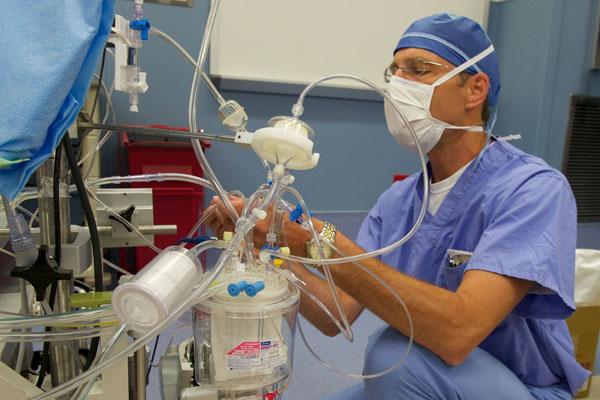 Murray taps the tubing to remove air bubbles and tests the pressure inside for any leaks. He also checks the oxygenator, filters and alarms, and makes sure the heating and cooling units that control the patient’s core body temperature during surgery are in working order.
Murray taps the tubing to remove air bubbles and tests the pressure inside for any leaks. He also checks the oxygenator, filters and alarms, and makes sure the heating and cooling units that control the patient’s core body temperature during surgery are in working order.
“Each heart lung machine is custom built for that particular patient,” he said. “There are different size circuits and tubing that can be added onto the machine’s hardware. Anything that comes into contact with a patient’s blood is thrown away.”
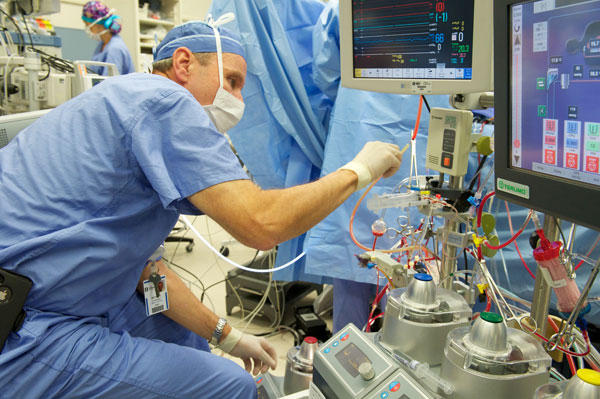 While Murray preps the heart lung machine, Corrigan takes care of getting the pharmaceuticals and blood products, completing paperwork, and organizing the supplies he’ll need to check the patient’s blood acidity, pH, glucose and clotting times. He will then enter that data in real time during surgery.
While Murray preps the heart lung machine, Corrigan takes care of getting the pharmaceuticals and blood products, completing paperwork, and organizing the supplies he’ll need to check the patient’s blood acidity, pH, glucose and clotting times. He will then enter that data in real time during surgery.
A handheld machine that holds tiny cartridges will let Corrigan check blood samples every 30 minutes and print off the results immediately.
A white board in the cardiac OR gives the patient’s pre-surgery vitals as well as a standard of care index based on the patient’s height and weight. These numbers allow the perfusionists to know target blood flow levels and stay within that range when surgery starts.
An average surgery can take anywhere from 2-6 hours. The majority of surgeries are performed on babies younger than 1 year who are born with congenital heart deformities.
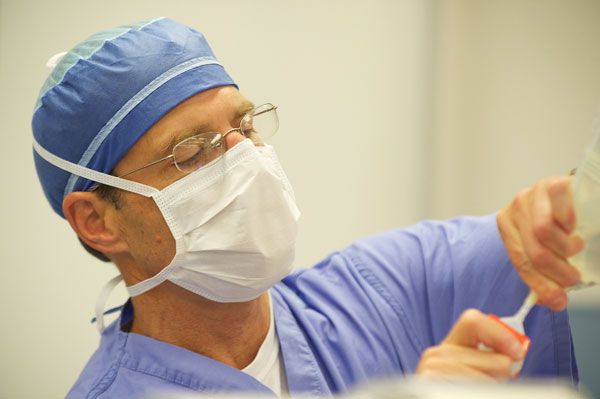 “We treat babies and kids with ‘plumbing problems’ and structural defects – things like ASDs, VSDs and hypoplastic hearts,” said Murray. “It’s very different from treating adults who have more acquired coronary problems as a result of diet and lifestyle.”
“We treat babies and kids with ‘plumbing problems’ and structural defects – things like ASDs, VSDs and hypoplastic hearts,” said Murray. “It’s very different from treating adults who have more acquired coronary problems as a result of diet and lifestyle.”
Today’s 6-pound patient has no mitral valve or left ventricle.
“The surgeons will use a cryo-preserved graft from a cadaver to combine the aorta and pulmonary artery into one vessel and add a shunt to pump oxygen to the lungs,” said Corrigan. “Basically we’re asking the right side of the heart to do the functions of both sides by rerouting things to make it work as best we can.”
During the 7:30 a.m. huddle, the 9-person surgical team lays out the expectations and possible complications.
“The surgeon does a good job explaining to the team what to expect,” said Corrigan. “The outcome is dependent on the defect.”
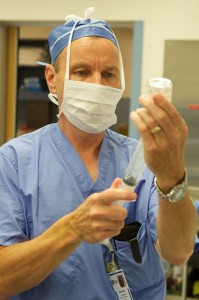 At 9:30 a.m. the surgeons make the initial skin incision.
At 9:30 a.m. the surgeons make the initial skin incision.
Murray and Corrigan begin by lowering the patient’s core body temperature from 37° Celsius to 18°. This can take anywhere from 45-60 minutes, because it cools the organs first.
Today’s case may call for something they rarely have to do – a period of circulatory arrest – which is why the patient is cooled to such a low temperature.
“Basically the body is so cold that it goes into a hibernation state where it doesn’t need much energy or oxygen,” said Corrigan.
Next, a very cold solution called cardioplegia – a combination of potassium and lidocaine – will be administered to stop the heart from beating so the surgeons can access the inside of the heart.
While any open heart surgery is risky, fatalities are rare.
“This is a very high-stress job, there is no room for error,” Corrigan said.
Aiming for perfection
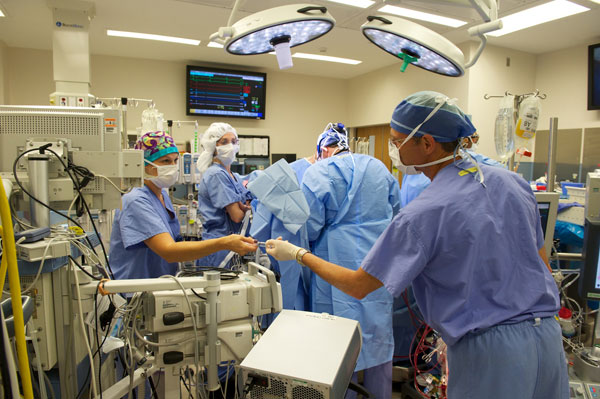 If you change a few letters in perfusionist you get perfectionist and that’s what these men truly have to be.
If you change a few letters in perfusionist you get perfectionist and that’s what these men truly have to be.
Much like the airline industry they often reference, safety checks and rechecks help prevent mistakes.
Today’s case proves to be a rare type they see only once or twice a year.
“The patient had to be put into circulatory arrest, which means he had no blood in his body and no heartbeat for 30-40 minutes. He won’t suffer brain damage or other complications as a result of his core body temperature being kept so low,” said Corrigan.
While some may view a case like this one as sad, Murray and Corrigan have a different approach.
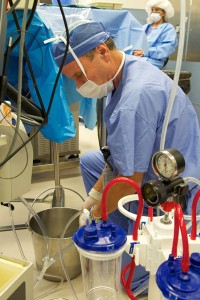 “Twenty-five years ago this child would have died shortly after birth,” said Corrigan. “Although this patient is in for at least 2 more surgeries in the next 4 years, he has a very good chance of leading a relatively normal life.”
“Twenty-five years ago this child would have died shortly after birth,” said Corrigan. “Although this patient is in for at least 2 more surgeries in the next 4 years, he has a very good chance of leading a relatively normal life.”
Both men like the responsibility and reward of their jobs. They say it’s gratifying to hear about the fruits of their labor.
“When a child responds well, it’s amazing to see how quickly he or she bounces back,” said Murray.
At 1:44 p.m. the patient comes off bypass and at 3:52 p.m. surgery is complete.
Following surgery the perfusionists take the machine apart and clean up. After grabbing a bite to eat they check back to make sure the patient is stable. If complications arise, there’s a chance they may be called back into surgery.
Thankfully there were no complications on this day.
On non-surgery days you can find Murray and Corrigan performing inservices, nursing presentations, running queries, meeting vendors, maintaining the equipment and reporting the hospital’s quality and patient safety statistics, which are reported biannually, to the Society of Thoracic Surgeon’s national database.
Certified clinical perfusionists are a rare breed. Only 17 schools in the United States offer the 2-year certification program and only 4-5 students are accepted per class. Perfusionists must first have a bachelor’s degree before being admitted to a perfusion program.
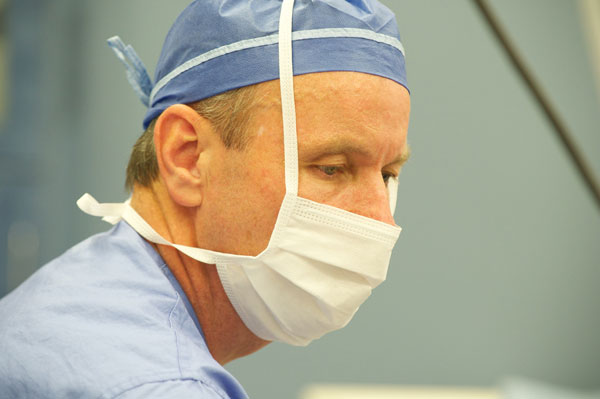 Only 7 perfusionists are employed in the greater Akron area.
Only 7 perfusionists are employed in the greater Akron area.
“This job is all consuming, but it’s never boring,” said Murray. “Every day is different and that’s what I like best about it. I never see the same thing twice.”
If you’re interested in a career at Akron Children’s, check out our current job opportunities.










